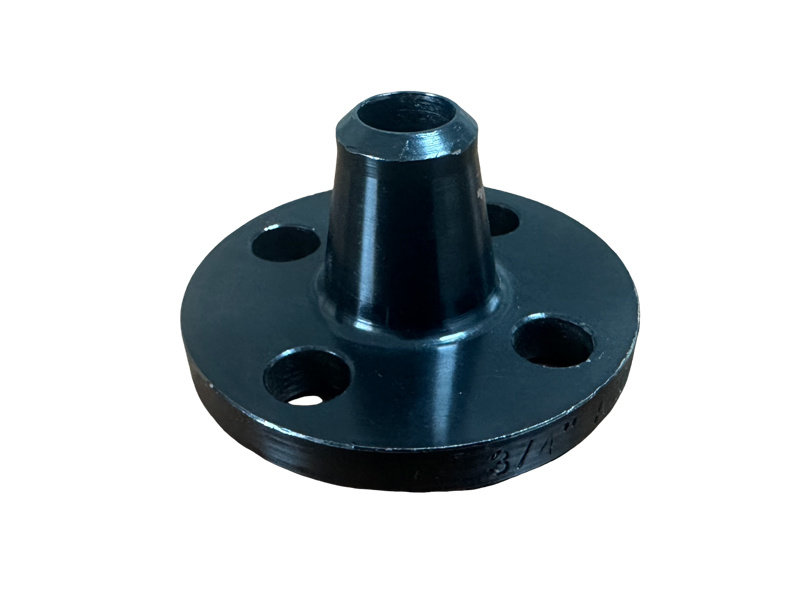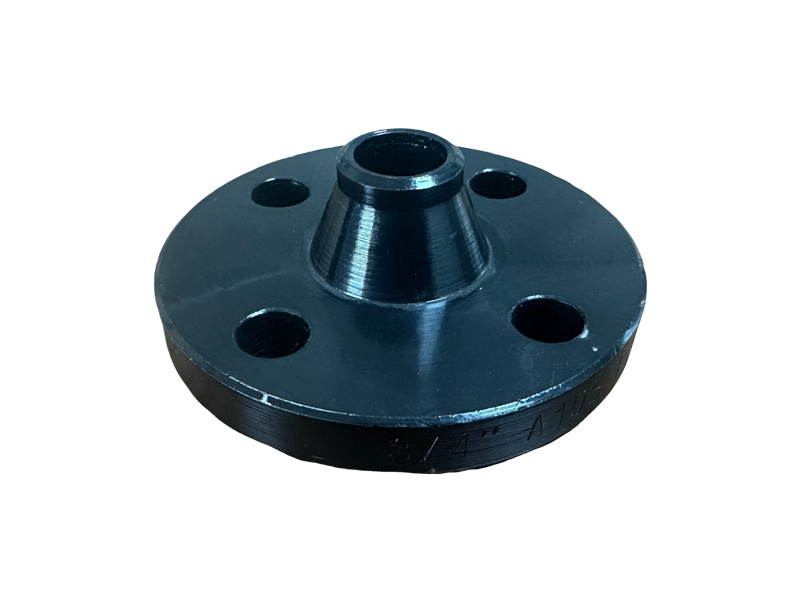-
Understanding the Benefits of ANSI Weld Neck Flanges in Construction
Date:
04 Jun,2025
Understanding the Benefits of ANSI Weld Neck Flanges in Construction Table of Contents 1. Introduction to ANSI Weld Neck Flanges 2. Design Characteristics of ANSI Weld Neck Flanges 3. Common Applications in Construction 4. Key Benefits of ANSI Weld Neck Flanges 5. Installation Guidelines for ANSI Weld Neck Flanges 6. Maintenance Considerations 7. Comparing ANSI Weld Ne
Understanding the Benefits of ANSI Weld Neck Flanges in Construction
Table of Contents
- 1. Introduction to ANSI Weld Neck Flanges
- 2. Design Characteristics of ANSI Weld Neck Flanges
- 3. Common Applications in Construction
- 4. Key Benefits of ANSI Weld Neck Flanges
- 5. Installation Guidelines for ANSI Weld Neck Flanges
- 6. Maintenance Considerations
- 7. Comparing ANSI Weld Neck Flanges with Other Flange Types
- 8. Frequently Asked Questions
- 9. Conclusion
1. Introduction to ANSI Weld Neck Flanges
In the construction and piping industry, the integrity and reliability of connections are paramount. **ANSI Weld Neck Flanges** have emerged as a crucial component in ensuring that high-stress piping systems remain secure, leak-proof, and efficient. These flanges are specifically designed to be welded to pipes, creating a robust joint that can withstand significant pressure and temperature variations.
Weld neck flanges are characterized by their long neck, which serves not just as a connection point, but also as a reinforcement. This design significantly enhances the strength of the joint, making it ideal for high-pressure applications. Understanding the benefits of ANSI Weld Neck Flanges can help construction professionals make informed decisions that affect both the performance and longevity of their piping systems.
2. Design Characteristics of ANSI Weld Neck Flanges
The design of ANSI Weld Neck Flanges is one of their most distinctive features. Here are some key design aspects:
2.1. Neck Length and Reinforcement
The extended neck of the weld neck flange provides additional reinforcement. This feature is particularly important in high-stress environments where loads may fluctuate.
2.2. Face Types
ANSI Weld Neck Flanges can feature various face types, including raised faces and flat faces. Each type is suited to different applications and can enhance the seal when mated with corresponding flanges.
2.3. Pressure and Temperature Ratings
These flanges are produced to meet specific ANSI standards, ensuring they can withstand high pressures and temperatures. They are classified by pressure ratings that range from 150 to 2500 psi, making them versatile for various applications.
3. Common Applications in Construction
ANSI Weld Neck Flanges are widely utilized in numerous construction applications.
3.1. Oil and Gas Industry
In the oil and gas sector, these flanges are essential for connecting pipelines that transport crude oil and natural gas. Their ability to withstand harsh conditions makes them a preferred choice.
3.2. Chemical Processing
Weld neck flanges are commonly used in chemical processing plants where high pressure and corrosive materials are present. Their robust design minimizes the risk of leaks.
3.3. Power Generation
In power generation facilities, particularly those involving steam, ANSI Weld Neck Flanges are utilized to connect boilers and piping systems, ensuring safe and efficient operation.
4. Key Benefits of ANSI Weld Neck Flanges
ANSI Weld Neck Flanges offer numerous benefits that make them an ideal choice for construction projects.
4.1. Enhanced Durability
The strong design of weld neck flanges contributes to their durability. They can withstand extreme temperatures and pressures, reducing the likelihood of failure over time.
4.2. Reduced Stress Concentration
The gradual transition from the flange to the pipe reduces stress concentrations, which is crucial in preventing joint failure, especially in high-pressure systems.
4.3. Easy Alignment
During installation, the neck aids in aligning the flange with the pipe, simplifying the welding process and reducing installation time.
4.4. Improved Seal Integrity
The design allows for a more effective seal, minimizing the risk of leaks that can lead to costly downtime and repairs.
4.5. Cost-Effectiveness
Though initially more expensive than other flange types, the long-term savings associated with maintenance and repairs make ANSI Weld Neck Flanges a cost-effective choice.
5. Installation Guidelines for ANSI Weld Neck Flanges
Proper installation is critical to ensuring the benefits of ANSI Weld Neck Flanges are fully realized.
5.1. Preparation
Before installation, both the flange and pipe ends should be cleaned thoroughly to remove any debris or contaminants.
5.2. Alignment
Proper alignment is essential. The neck of the flange should be aligned with the pipe to avoid stress during the welding process.
5.3. Welding Techniques
Employing the right welding technique is crucial. Techniques such as TIG (Tungsten Inert Gas) or MIG (Metal Inert Gas) welding are recommended for achieving strong, reliable joints.
5.4. Quality Control
Post-installation, inspections should be carried out to ensure the integrity of the welds and overall installation quality.
6. Maintenance Considerations
Maintaining ANSI Weld Neck Flanges is essential for ensuring longevity and performance.
6.1. Regular Inspections
Regular inspections should be conducted to check for signs of wear, corrosion, or leaks.
6.2. Cleaning
Routine cleaning of the flange and surrounding areas helps prevent build-up of corrosive materials that can affect performance.
6.3. Replacement Planning
Planning for timely replacements of worn-out flanges can prevent unexpected failures and maintain operational efficiency.
7. Comparing ANSI Weld Neck Flanges with Other Flange Types
When selecting flanges for construction projects, it’s important to compare ANSI Weld Neck Flanges to alternative options.
7.1. Slip-On Flanges
Slip-on flanges are easier to install but may not possess the same level of strength and leak resistance as weld neck flanges.
7.2. Blind Flanges
Blind flanges are used to seal off piping systems but do not offer the same functionality for connection as weld neck flanges.
7.3. Threaded Flanges
Threaded flanges are simpler to install but can be more susceptible to leaks under high-pressure conditions compared to weld neck flanges.
8. Frequently Asked Questions
8.1. What materials are ANSI Weld Neck Flanges made from?
ANSI Weld Neck Flanges are made from various materials, including carbon steel, stainless steel, and alloy materials, depending on the application requirements.
8.2. Can ANSI Weld Neck Flanges be used in high-temperature applications?
Yes, these flanges are designed to withstand high temperatures, making them suitable for high-temperature applications such as power generation.
8.3. How do I choose the right flange size for my project?
Selecting the right flange size involves considering the pipe diameter, pressure rating, and the specific requirements of your application.
8.4. Are ANSI Weld Neck Flanges suitable for both liquid and gas applications?
Absolutely. ANSI Weld Neck Flanges are versatile and can be used for both liquid and gas applications.
8.5. What are the consequences of improper installation of weld neck flanges?
Improper installation can lead to leaks, joint failures, and potential safety hazards, resulting in costly repairs and downtime.
9. Conclusion
ANSI Weld Neck Flanges play a pivotal role in enhancing the reliability and efficiency of piping systems in the construction industry. Their unique design offers a multitude of benefits, including durability, reduced stress concentration, and improved seal integrity. By understanding the advantages and proper installation techniques of these flanges, construction professionals can ensure the longevity and efficiency of their projects.
Choosing ANSI Weld Neck Flanges is an investment in quality and performance, making them a preferred choice for those looking to achieve optimal results in their piping systems. As construction projects grow increasingly complex and challenging, the importance of utilizing robust and reliable components like ANSI Weld Neck Flanges cannot be overstated.Related News
06 Jun,2025
Why Choose 150lb ANSI Weld Neck Flanges for Your Plumbing Projects?
Why Choose 150lb ANSI Weld Neck Flanges for Your Plumbing Projects? Table of Contents 1. Introduction to ANSI Weld Neck Flanges 2. What Are Weld Neck Flanges? 3. Specifications of 150lb ANSI Weld Neck Flanges 4. Advantages of Using 150lb ANSI Weld Neck Flanges 5. Applications of 150lb ANSI Weld Neck Flanges 6. Installation Guide for Weld Neck Flanges 7. Maintenance and
05 Jun,2025
Understanding ANSI Weld Neck Flange 150lb: A Comprehensive Guide
When it comes to piping systems in construction and decorative materials, choosing the right components is crucial for ensuring strength, durability, and safety. One such component is the ANSI weld neck flange 150lb, which plays a vital role in connecting pipes and facilitating the flow of fluids. The ANSI weld neck flange 150lb is designed according to the standards set by the American National S
04 Jun,2025
Understanding the Benefits of ANSI Weld Neck Flanges in Construction
Understanding the Benefits of ANSI Weld Neck Flanges in Construction Table of Contents 1. Introduction to ANSI Weld Neck Flanges 2. Design Characteristics of ANSI Weld Neck Flanges 3. Common Applications in Construction 4. Key Benefits of ANSI Weld Neck Flanges 5. Installation Guidelines for ANSI Weld Neck Flanges 6. Maintenance Considerations 7. Comparing ANSI Weld Ne
Contact information
Address: North Ring Industrial Zone, Mengcun County
Telephone: 86 0317- 6729218 86 0317-6727320
Fax: 0317-6727310
mobile phone: 86 13833761688whatsapp: 86-13780271039
Email: shengyuanflange@163.comLeave Message









